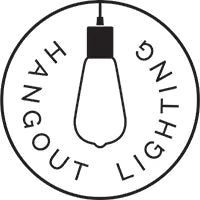Bulbs are a fun way to personalize your light fixture. Choose the best fit for your style and how you use the space.
First, let’s talk about what makes a light bright.
Lumens vs Watts
Watts measure the amount of energy required to power a bulb. Lumens measure the amount of light produced. The more lumens in a light bulb, the brighter the light.
Depending on the type of bulb, a lower watt can produce higher lumens because it is more energy efficient. For example, a 40-watt incandescent can produce 180 lumens while a 4-watt LED bulb can produce 400 lumens.
Shopping by lumens with help you think about how much light the space will have. Shopping by watts will help you if you want to save energy and money.
So, how many lumens do I need?
Determining Lumens Per Room
Step 1
Multiply room dimensions (in feet) to determine the square footage of your space. (example: 30ft x 50ft =1,500 sq ft)
Step 2
Using the Suggested Lumens Chart, multiply the suggested lumens for the type of room by the square footage of the room to get the total number of lumens suggested for the entire room. Remember, the total lumens can come from more than one light source. (example: 20 (from chart) x 1,500 sq ft = 3,000 lumens)
Suggested Lumens Chart
| Room |
Number of Lumens Suggested (PER SQ FOOT) |
|
Living Room |
10 - 20 Lumen |
| Kitchen General | 30 - 40 Lumens |
| Kitchen Stove/Sink | 70-80 Lumens |
| Dining Room | 30-40 Lumens |
| Bedroom | 10-20 Lumens |
| Hallway | 5-10 Lumens |
Step 3
Once you know the amount of lumens needed, you can determine which kinds fixtures and how many bulbs you will need to get the proper lighting in your space.
Temperature
The temperature of lightbulbs determines the mood of your space. This isn’t about hot or cold to the touch, but light that appears cool or warm.
This kind of light temperature is measured in Kelvin (abbreviated "K") and degrees of Kelvin are measured on a scale of 1,000 - 10,000. Light with a yellow glow, more like candlelight, has a lower Kelvin measurement. Blue light, more like bright daylight, has a higher Kelvin measurement.

2000-2900Cozy & Intimate: Intimate ambient lighting recommended for kitchens, bedrooms, bathrooms and restaurant/commercial settings. |
3000-3500Bright & Vibrant: Task lighting recommended for basements, work environments, task lighting and bathrooms. |
3600 - 5000Crisp & Invigorating: More intense lighting recommended for display lighting, garages and task lighting. |
LED Amber Tinted Glass - 2200K Warm Light
New LED technology mimics the same warm feel of our antique collection while offering a long lasting 15,000 Life Hours, and energy efficient option.
Dimmable, Standard E26 Base, 400 Lumens, 4 Watts
LED Clear Glass - 2700K Warm or 3500K Cool
For a bright, clean, and modern look with all the advantages of long lasting energy efficiency. Dimmable, Standard E26 Base, 400 Lumens, 4 Watts

LED Milk White - 3500K
Opaque white glass creates a look both strikingly classic and modern. A smart choice for single pendants, wall sconces and pendant clusters. Dimmable, Standard E26 Base, 400 Lumens, 4 Watts

LED Dipped - 2700K
Soft, ambient effect thanks to the bottom-mirrored finish, which fully blocks light and redirects it upwards. Dimmable, Standard E26 Base, 400 Lumens, 4 Watts

LED Oversized - 2200K
Oversized bulbs work in any Hangout fixture. Use one as an alternative to a shade on a single pendant, create major impact on a pendant cluster, or mix in a few on a wood chandelier.




Share:
Modern Pendant Lighting Guide
DIY vs. Custom Pendant Lights: Pros and Cons